By Dustin Delfin, Middle School Math Teacher
At the midpoint of this school year, I met with a group of teachers for professional development to discuss strategies used in the classroom. During this time, another teacher mentioned the use of Minecraft in her classroom and it caught my attention. Although I had no knowledge of Minecraft, I knew my students loved it. I later scheduled a time to observe her class to see how the program was used. When I witnessed the high levels of student engagement in her class, I knew I wanted to incorporate this program into my own classroom to reach that same engagement level.
Right before winter break, I introduced Minecraft Math City to my 6th graders. I explained that as we explored new mathematical concepts, we will apply them to the creation of this city. In addition, students were each given fictitious bank accounts using mykidsbank.org which allowed them to establish their own financial stake in our Math City. Students were able to earn Delfin Dollars by participating in class and through accurate formative assessment responses.

The city used the coordinate plane to guide its layout, creating properties of land which provided space for students to build their structures. The ordered pairs in this city represent the addresses of buildings and structures.

Once the city was laid out, students began construction of buildings. They created skyscrapers using 10×10 facade walls with specific values represented by different colors. For example, they needed to show 1.05 of the facade wall to be orange, 250% of another wall to be blue and 2 and 7/20 of another wall to be green. This task also asked students to convert these rational numbers into equivalent percentages, fractions, and decimals.
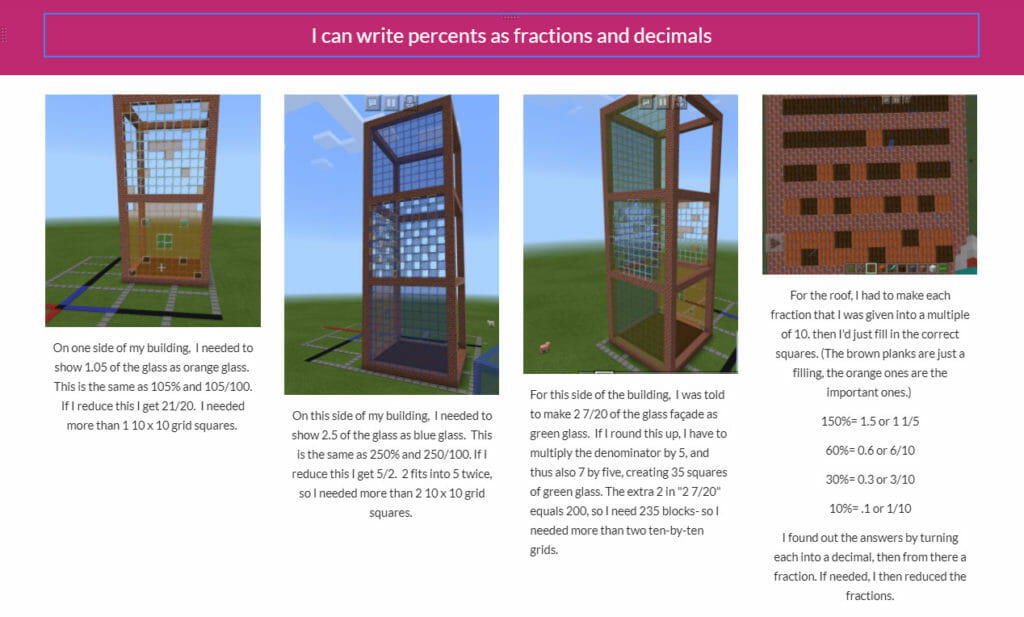
Similar to the game of Life, students were asked to select the education (Associates, Bachelors, Masters, or Doctoral degrees) they wanted for themselves and calculate the amount of their weekly student loan. They were then asked to select a career and computed their weekly net income by taking out taxes and other deductions. Finally, students purchased properties within Minecraft Math City and calculated the weekly cost of their home (including interest and taxes). All of these tasks involved finding a percent of a number and using proportions to solve for the unknown values.
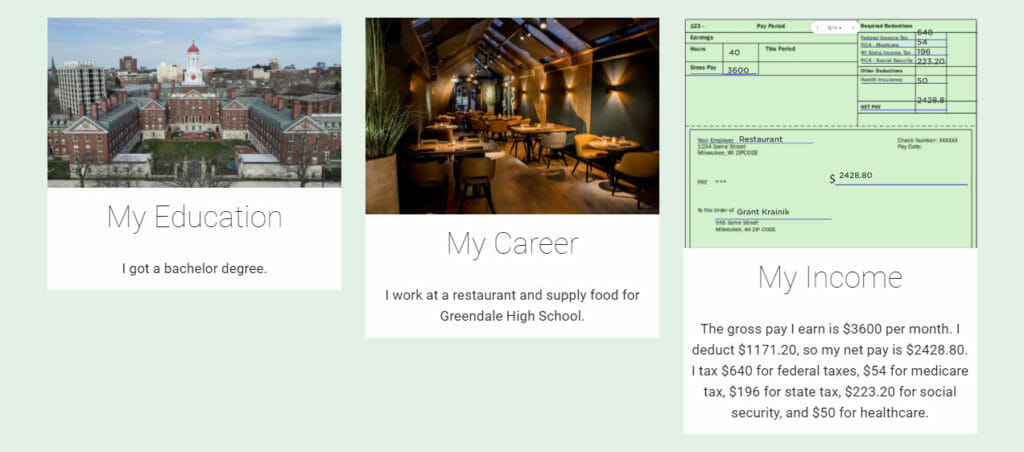
Since students now have weekly income and bills, these figures were automatically withdrawn or deposited into their bank account on a weekly basis. This gave them the ability to see how mathematical operations involving rational numbers work in real life. Below is a student bank statement showing deposits and withdrawals.


Students were then asked to build their homes on the specific property size they previously selected. They enjoyed creating their own dwellings by using their Minecraft skills. Once built, they created a Minecraft Zillow page that provided more detailed information about their homes along with algebraic expressions that described the possible area of their homes.

After we returned from spring break, students began working on their math business project. They came up with names and logos that represent their businesses. This five-phase project took us the remainder of the year to complete as it incorporated students’ fictitious bank accounts, the lessons we explored in class, and their Minecraft Math City.

Phase 2 of the project called for students to create their own interactive math app for solving equations. The apps were built using Google Slides and contain video tutorials, practice problems, and feedback for users.

Once the apps were finalized, students bought/sold apps from/to their peers. Class time was given so students could purchase at least 12 different math apps using the math app class store (see below) and transferred money from their bank accounts to finalize these transactions.

The apps were then loaded onto their individual Minecraft Math City cell phones. Each student has their own Minecraft Math City cell phone stored in their math portfolio containing the specific apps they purchased.
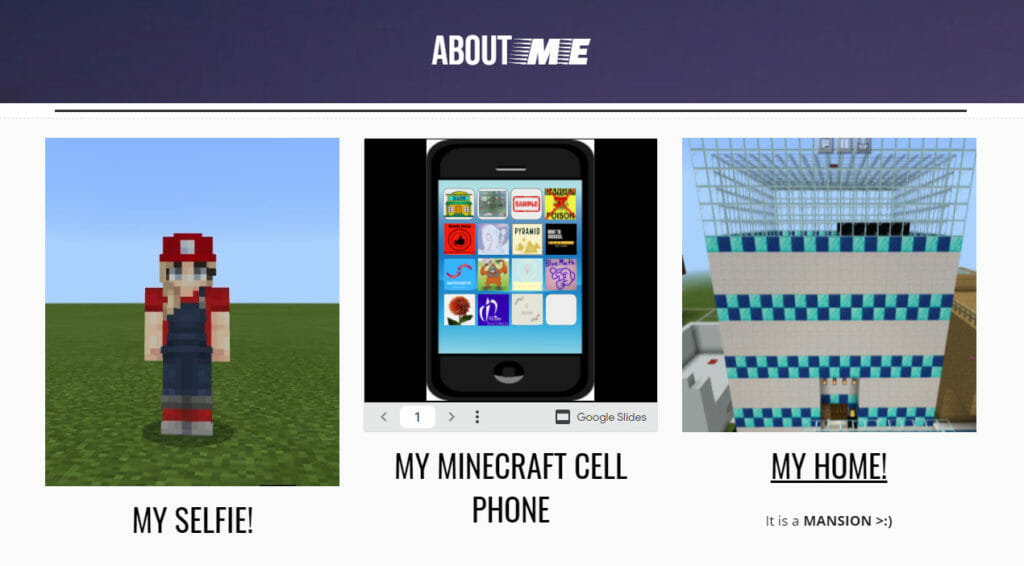
Students were given class time to explore the apps they purchased from their peers and solve the practice problems. The feedback on the app helped students check their understanding of solving equations while giving them the opportunity to critique the reasoning of others. Students were encouraged to look for errors and identify mistakes if they disagreed with their peers’ work (refer to the student work below).
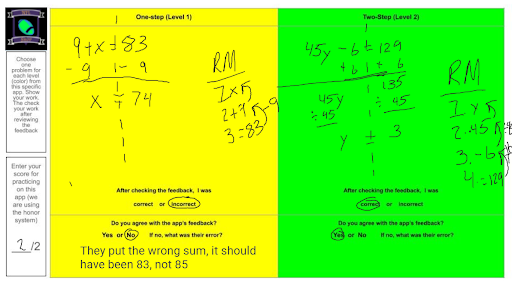
Since students participated in creating a mini economy through buying/selling apps in phase 3, they were able to participate in phase 4 of the project by using the data generated from the sales of their apps to write and graph linear functions.
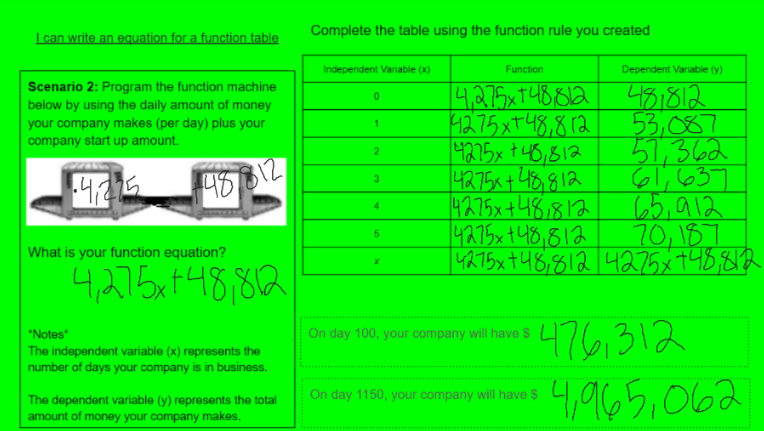
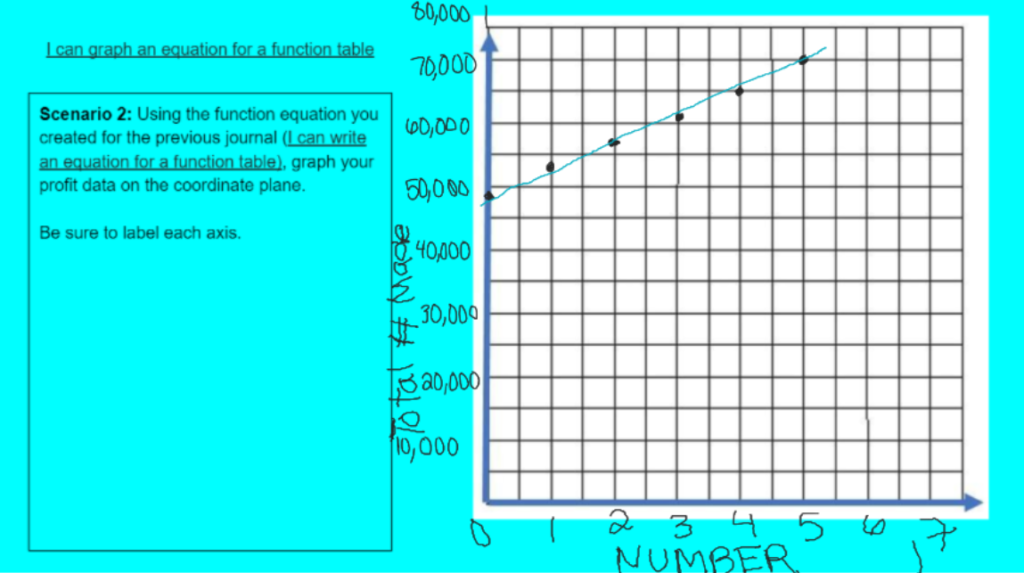
Finally, as we conclude the school year, students used the concepts of our geometry unit to build and design their company’s office building within Minecraft Math City. The parameters for phase 5 asked students to construct their office building out of perfect squares and perfect cubes while incorporating various polygons (rectangles, triangles, parallelograms, and trapezoids) within their office building. Students had to use appropriate formulas to find the area and volumes of the basic shapes that composed their unique structures.
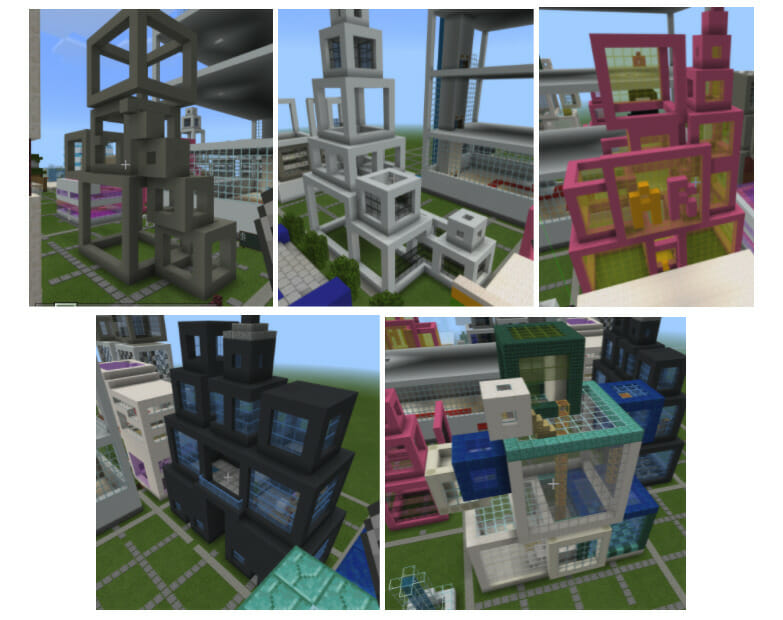
I am hopeful that this experience has allowed my students to experience joy in math by bridging real-life scenarios with Minecraft.